Whole mung dal is my favorite Indian dish of all time. This recipe is easy to make, with just a few ingredients, and it's very, very yummy!
It features earthiness from cumin seeds, gentle heat from fresh ginger, and a bit of nourishing fat from ghee (clarified butter) that ties everything together.
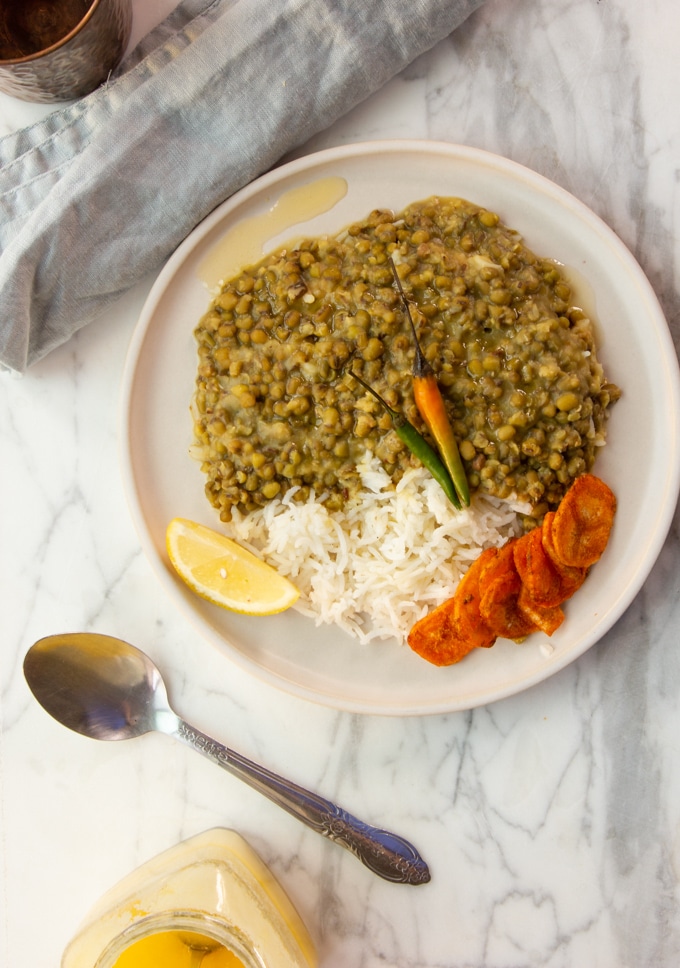
I discovered this recipe about two decades ago, before I knew very much about Indian cuisine, and long before I had an Indian husband, or an Indian family to teach me.
It features whole mung dal, also known as mung beans. Mung is cited in ancient Vedic texts (over 5,000 years old) as the “king of dal” for its high digestibility and balancing properties.
Fortunately, whole mung beans are available at most grocery stores, so you will have no problem sourcing ingredients and enjoying this ingredient to your heart's content.
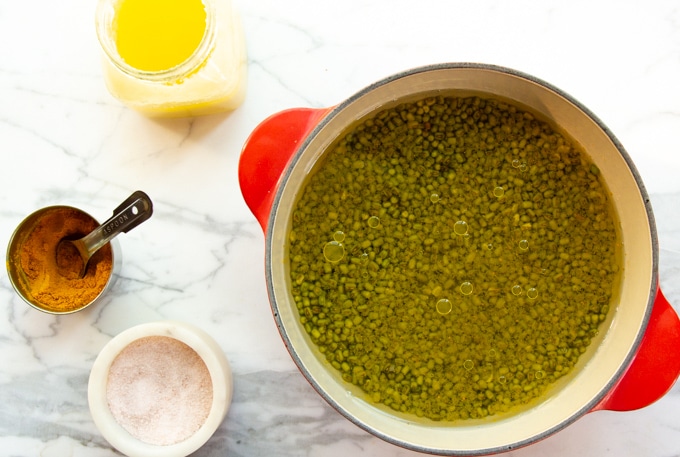
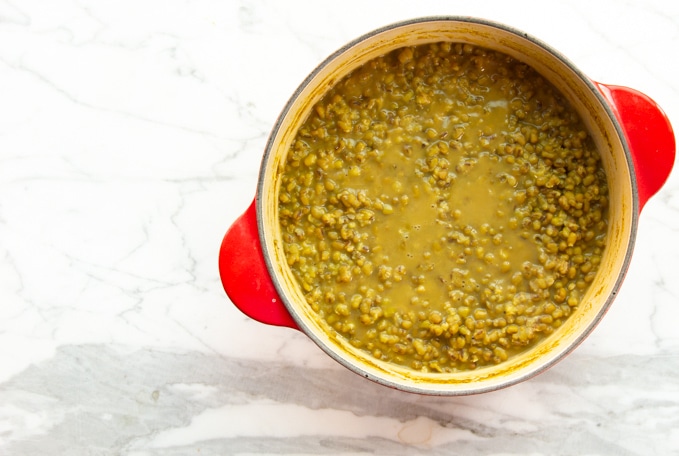
The word "dal" has a double meaning. It is what Indians call a soup or stew made from lentils or beans. But it is also a term for dried lentils, beans, or peas before they are cooked.
I love the size, shape, and moss-green color of whole mung dal. When cooked, the dal breaks down partially, but retains enough of its shape for a satisfying chew.
Whole mung dal is high in protein, fiber, antioxidants, and phytonutrients. Like all lentils and beans, the tiny bean is low in fat, and offers a filling alternative to meat.
How to make
Whole mung dal can be make in a saucepan, or in a pressure cooker, such as an Instant Pot.
Once the beans are cooked, you prepare a flavor bomb of cumin seed, green chili, ginger, coriander power, and optional asafetida caramelized in hot ghee.
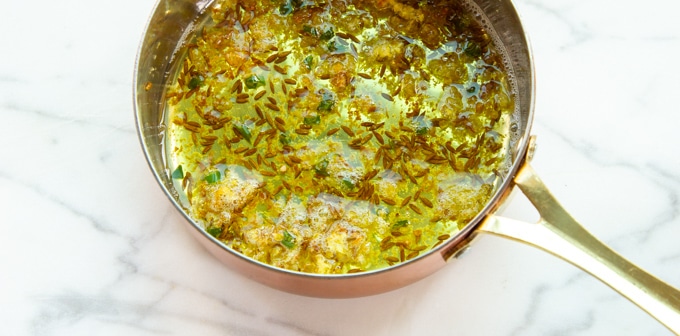
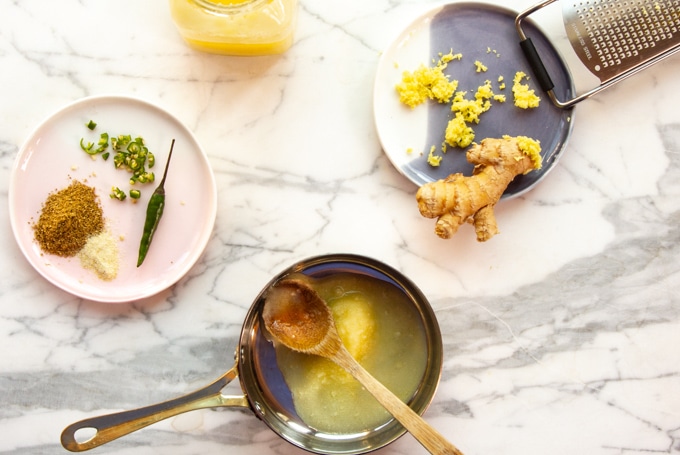
Then you sizzle the spiced ghee into the mung beans and stir.
Follow up with a squeeze of fresh lemon and Himalayan pink salt, and the dal is done.
Whole mung dal may not look pretty, but, like all Indian dal, the taste is fantastic.
I hope you enjoy this basic whole mung dal recipe as much as I do!
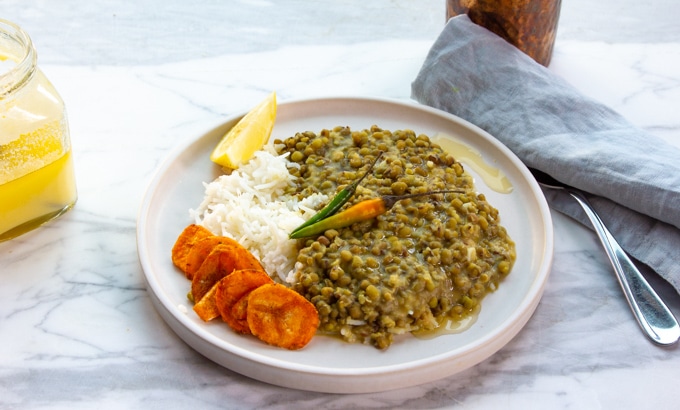
RECOMMENDED FOR YOU:
Pressure Cooking Guide: How To Use A Pressure Cooker Safely —READ MORE
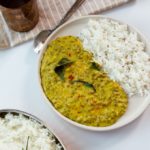
Whole Mung Bean Dal With Cumin, Ghee & Turmeric
Helpful Kitchen Tools:
Ingredients
to cook the mung beans
- 1 cup whole mung beans
- 2 ½-3 cups water
- ¼ teaspoon turmeric powder
- ¾ teaspoon Himalayan pink salt
to flavor the mung beans
- 1 tablespoon ghee
- ½ teaspoon cumin seeds
- 1 teaspoon green chili, minced
- 1 teaspoon fresh ginger root, minced
- 1 teaspoon coriander powder
- pinch asafetida, optional
- 1 teaspoon lemon juice, freshly squeezed
Instructions
STEP 1: Soak the mung beans
- Cover dry mung beans with cold water and soak for four hours or overnight. A quick soak can also be done by placing the beans in a bowl and pouring boiling water over them for 20 minutes.
- When you are ready to start cooking the mung beans, drain off the soaking water and rinse well (3–4 times) until the water runs clear.
STEP 2: Cook the mung beans (saucepan or Instant Pot)
- SAUCEPAN: Add mung beans to a medium saucepan with 3 cups of cold water. Add turmeric powder and a pinch of salt, and bring to a boil with the lid off. Turn down the heat, cover, and simmer for 50 minutes, or until the mung beans are well cooked and starting to fall apart.
- INSTANT POT: Add mung beans to Instant Pot with 2.5 cups of cold water. Add turmeric powder and a pinch of salt. Cover, select high pressure, and cook for 10 minutes.
- Allow the pressure to come down naturally for 15 minutes. Manually release any remaining steam and open the lid. The mung beans should be well cooked and starting to fall apart.
STEP 3: Create the seasoning and finish the mung dal
- Mince green chili and ginger. Take out all the required spices and have them ready by the stove.
- In a small skillet, heat ghee on medium-low and cook the cumin seeds, green chili, and ginger for a minute until the ginger starts to brown. Add the coriander powder and optional asafetida, and sauté for about 30 seconds until you smell the aroma. Turn off the heat.
- Transfer the spiced ghee from the skillet into the cooked dal and stir well. Turn the heat under the dal to low and thin with water to a desired consistency.
- Taste, and add remaining salt. Simmer for 5–10 minutes on very low heat to marry the flavors together, stirring occasionally. Finish with fresh lemon juice. Notice how much the lemon heightens all the flavors and brings this dish together.
To serve
- Enjoy whole mung dal with steaming hot basmati rice, drizzled with ghee and a tiny bit of finishing salt. If you like, garnish the dal with chopped coriander leaves or stir them in.If you would like to add a vegetable side to your meal, try How to Prepare Any Vegetable, South Indian Style. I would think that greens would be lovely with this dal.Add Whole Wheat Roti Flatbread, or another flatbread for dipping. I keep pita bread and/or frozen naan bread in my freezer for convenience to have with Indian food. To heat it up, defrost in the microwave for 30 seconds, then bring the frozen flatbread back to life by warming it on a skillet with a bit of ghee just before serving.
Notes
MAKE THIS VEGAN
Substitute ghee with coconut oil or a quality vegetable oil, such as avocado oil or all-natural organic canola oil.OTHER INGREDIENT SUBSTITUTIONS
Asafetida is a powder made from the sap of a plant relative of fennel. It is commonly used in Indian cooking, but is virtually unknown in the West. Asafoetida is sometimes associated with a sulphur smell, and is thus very unique, and nearly impossible to substitute. It is a wonderful spice once you get familiar with it. I highly recommend investing in it when you are ready. For now, if you do not have asafoetida, leave it out, or consider adding some shallots to this dish with the ginger Mung dal is known as mung beans in the west. Mung beans are widely used in Chinese and Japanese cooking, and they are available at most conventional supermarkets. Turmeric is an essential ingredient in Indian cooking. It is easy to find in any grocery store. If you don’t have it, do get some. I use it in almost every recipe I create, and it is highly versatile. Green chilis are small and slender in size, and medium to medium hot in intensity. If you do not have green chilis, use an equal amount of fresh jalapeño, Thai chiles, or Serrano pepper. The spice levels are very similar. Cumin seed is used in cuisines all over the world. It has a distinctive earthy and warming flavor and aroma. The ingredient is essential to this recipe, and easy to find in any grocery store. Coriander powder is commonly used in Indian cuisine. Its taste is sweet and a little earthy. Coriander powder is commonly available in grocery stores, so I encourage you to invest in this spice as there is really no substitute. For more information, see A Guide to Indian Ingredient Substitutions. The ingredients for this recipe are inspired by Maya Tiwari’s “Life of Balance,” a reference book on Ayurvedic lifestyle that I have been using for over 20 years.Nutrition
If you liked this post, please share it with your friends on social media, or leave a comment below.
For more Buttered Veg lifestyle content, follow me on Pinterest, Facebook, or Instagram.
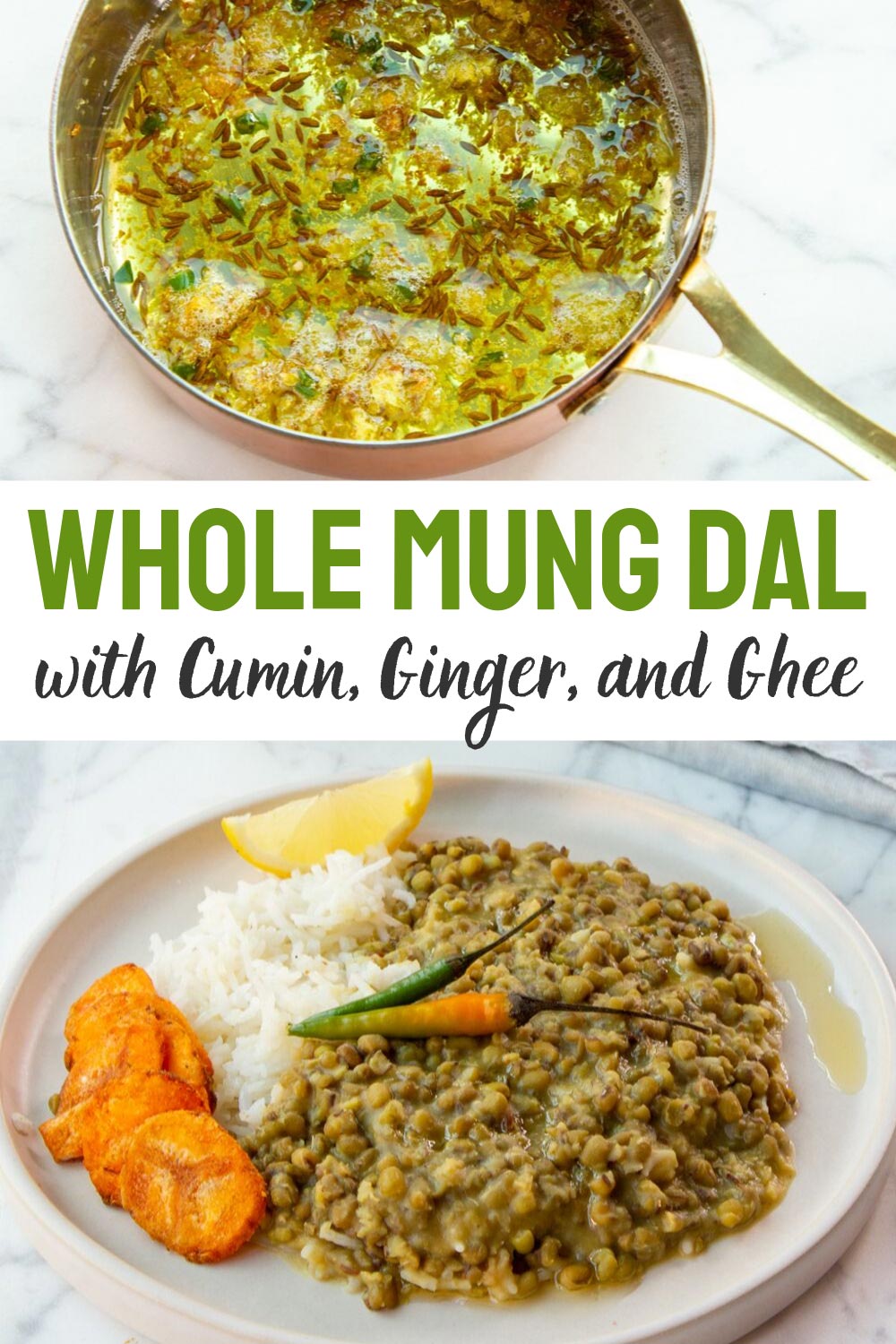

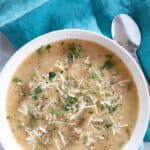
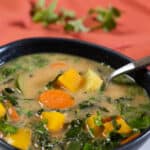
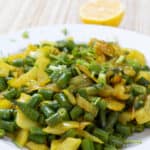
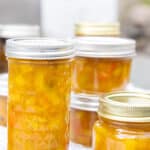
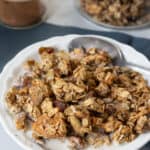
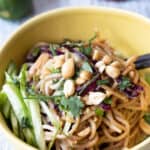

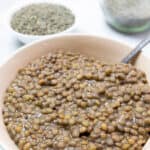
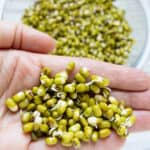
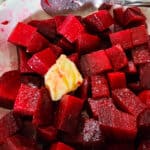


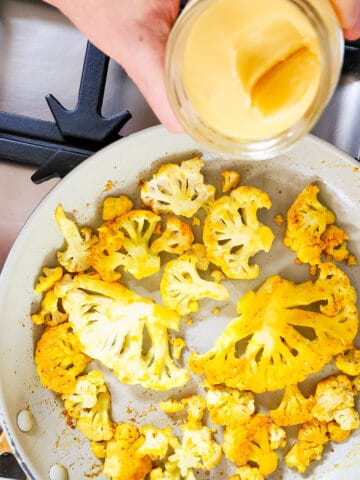
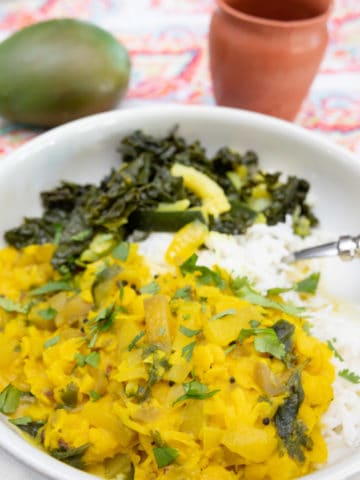
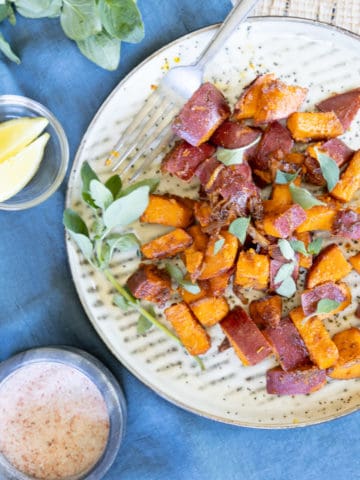
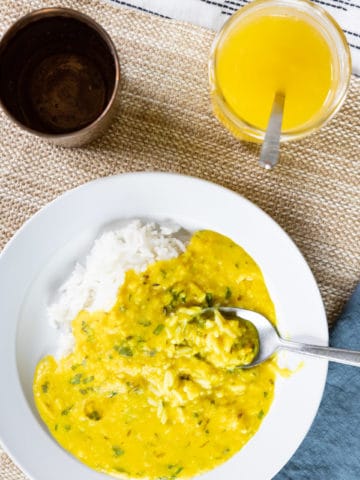
Leave a Reply